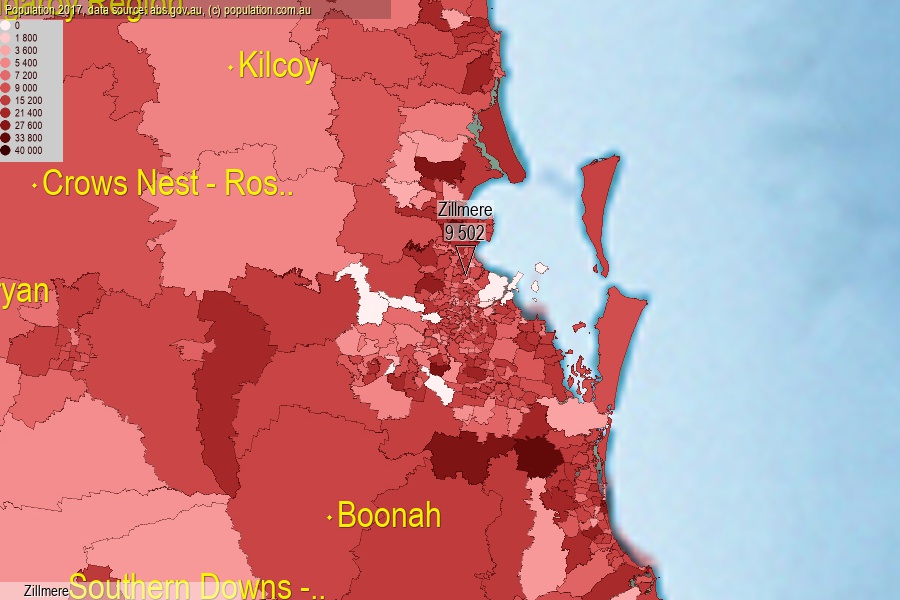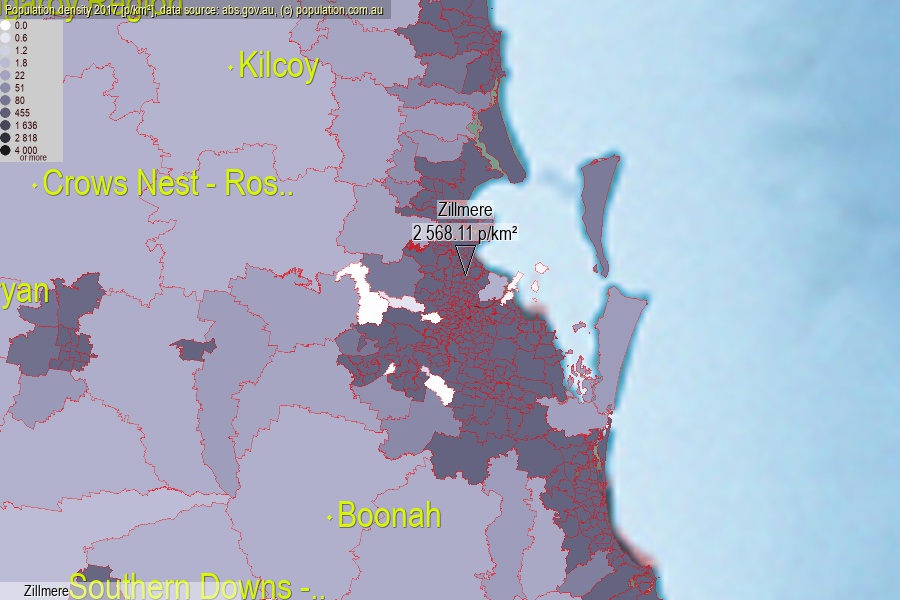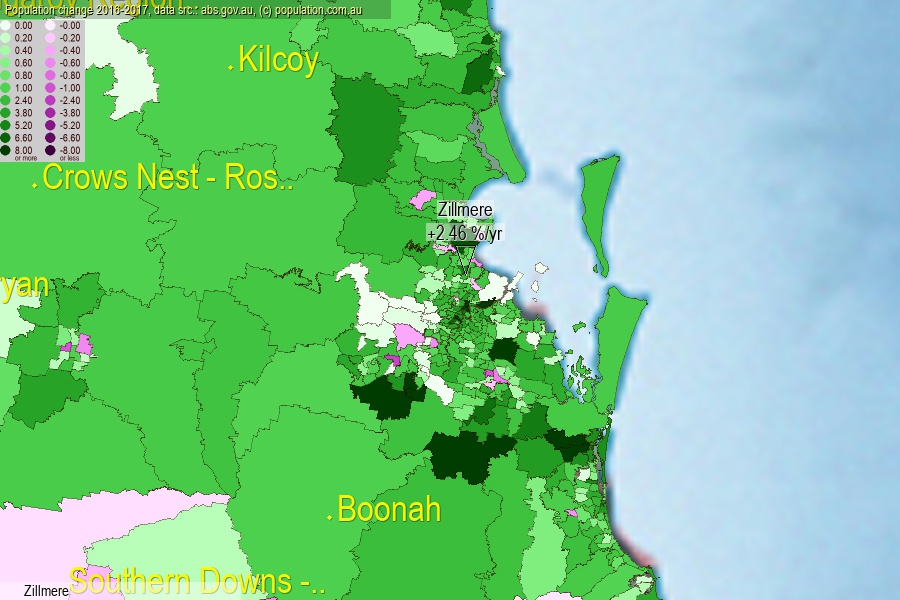 population.com.au
population.com.auLast official estimated population of Zillmere (as Statistical Area Level 2) was 9 502 people (on 2017-06-30)[2]. This was 0.04% of total Australian population and 0.19% of QLD population. Area of Zillmere is 3.70 km², in this year population density was 2 568.11 p/km² . If population growth rate would be same as in period 2016-2017 (+2.46%/yr), Zillmere population in 2025 would be 11 540. [0]



Click to enlarge. Zillmere is located in the center of the images.
Population [people], population density [p./km²] and population change [%/year] [2]
View borders » (new window) [4]
[1991-1992] -0.25 %/Yr.
[1992-1993] +0.54 %/Yr.
[1993-1994] +2.25 %/Yr.
[1994-1995] +0.80 %/Yr.
[1995-1996] +0.12 %/Yr.
[1996-1997] -0.74 %/Yr.
[1997-1998] -1.08 %/Yr.
[1998-1999] -0.25 %/Yr.
[1999-2000] -0.56 %/Yr.
[2000-2001] +0.52 %/Yr.
[2001-2002] +0.03 %/Yr.
[2002-2003] -0.33 %/Yr.
[2003-2004] -0.20 %/Yr.
[2004-2005] +0.07 %/Yr.
[2005-2006] +0.80 %/Yr.
[2006-2007] +0.44 %/Yr.
[2007-2008] +3.38 %/Yr.
[2008-2009] +1.22 %/Yr.
[2009-2010] +2.40 %/Yr.
[2010-2011] +2.99 %/Yr.
[2011-2012] +1.68 %/Yr.
[2012-2013] +3.73 %/Yr.
[2013-2014] +1.96 %/Yr.
[2014-2015] +1.86 %/Yr.
[2015-2016] +0.76 %/Yr.
[2016-2017] +2.46 %/Yr.
[0] Calculated with linear interpolation from officially estimated population
[1] Read more about SA2 and Australian Statistical Geography Standard (ASGS) on abs.gov.au
[2] Population data from Australian Bureau of Statistics (Population and density: 2017; change: 2016-2017)
[3] Digital Boundaries: Australian Statistical Geography Standard (ASGS) 2016.
[4] Border coordinates are simplifyed using Ramer-Douglas-Peucker algorithm.